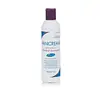What's inside
What's inside
 Benefits
Benefits

 Concerns
Concerns

 Ingredients Side-by-side
Ingredients Side-by-side

Water
Skin ConditioningLauryl Glucoside
CleansingSodium Coco-Sulfate
CleansingGlycerin
HumectantBetaine
HumectantCocamidopropyl Betaine
CleansingPolyglyceryl-4 Caprate
EmulsifyingPanthenol
Skin ConditioningHydroxypropyl Guar Hydroxypropyltrimonium Chloride
Glyceryl Caprylate
EmollientRibes Nigrum Seed Oil
EmollientRosmarinus Officinalis Leaf Extract
AntimicrobialBehenoyl Pg-Trimonium Chloride
Hexylene Glycol
EmulsifyingDisodium Cocoyl Glutamate
CleansingSodium Cocoyl Glutamate
CleansingParfum
MaskingSodium Chloride
MaskingSodium Gluconate
Skin ConditioningSodium Hydroxide
BufferingLactic Acid
BufferingSodium Benzoate
MaskingWater, Lauryl Glucoside, Sodium Coco-Sulfate, Glycerin, Betaine, Cocamidopropyl Betaine, Polyglyceryl-4 Caprate, Panthenol, Hydroxypropyl Guar Hydroxypropyltrimonium Chloride, Glyceryl Caprylate, Ribes Nigrum Seed Oil, Rosmarinus Officinalis Leaf Extract, Behenoyl Pg-Trimonium Chloride, Hexylene Glycol, Disodium Cocoyl Glutamate, Sodium Cocoyl Glutamate, Parfum, Sodium Chloride, Sodium Gluconate, Sodium Hydroxide, Lactic Acid, Sodium Benzoate
Zinc Pyrithione 2%
AntiseborrhoeicWater
Skin ConditioningLauryl Glucoside
CleansingCoco-Glucoside
CleansingAcrylates Copolymer
Panthenol
Skin ConditioningPentylene Glycol
Skin ConditioningGlycerin
HumectantSucrose Cocoate
EmulsifyingDisodium Cocoyl Glutamate
CleansingSodium Cocoyl Glycinate
CleansingBehenyl Alcohol
EmollientSucrose Stearate
EmollientCetyl Palmitate
EmollientSodium Cocoyl Glutamate
Cleansing1,2-Hexanediol
Skin ConditioningSodium Hydroxide
BufferingCaprylyl Glycol
EmollientSodium Chloride
MaskingZinc Pyrithione 2%, Water, Lauryl Glucoside, Coco-Glucoside, Acrylates Copolymer, Panthenol, Pentylene Glycol, Glycerin, Sucrose Cocoate, Disodium Cocoyl Glutamate, Sodium Cocoyl Glycinate, Behenyl Alcohol, Sucrose Stearate, Cetyl Palmitate, Sodium Cocoyl Glutamate, 1,2-Hexanediol, Sodium Hydroxide, Caprylyl Glycol, Sodium Chloride
 Reviews
Reviews

Ingredients Explained
These ingredients are found in both products.
Ingredients higher up in an ingredient list are typically present in a larger amount.
We don't have a description for Disodium Cocoyl Glutamate yet.
Glycerin is already naturally found in your skin. It helps moisturize and protect your skin.
A study from 2016 found glycerin to be more effective as a humectant than AHAs and hyaluronic acid.
As a humectant, it helps the skin stay hydrated by pulling moisture to your skin. The low molecular weight of glycerin allows it to pull moisture into the deeper layers of your skin.
Hydrated skin improves your skin barrier; Your skin barrier helps protect against irritants and bacteria.
Glycerin has also been found to have antimicrobial and antiviral properties. Due to these properties, glycerin is often used in wound and burn treatments.
In cosmetics, glycerin is usually derived from plants such as soybean or palm. However, it can also be sourced from animals, such as tallow or animal fat.
This ingredient is organic, colorless, odorless, and non-toxic.
Glycerin is the name for this ingredient in American English. British English uses Glycerol/Glycerine.
Learn more about GlycerinLauryl Glucoside sugar- and lipid-based cleansing agent. It is created from glucose and lauryl alcohol.
This ingredient is a surfactant, making it easier to rinse oil, dirt, and other pollutants away.
A British study found lauryl glucoside to cause skin sensitivity for some people. We recommend speaking with a professional if you have concerns.
Other names for this ingredient include "Lauryl Polyglucose", "Lauryl glycoside", and "D-Glucopyranoside".
Learn more about Lauryl GlucosidePanthenol is a common ingredient that helps hydrate and soothe the skin. It is found naturally in our skin and hair.
There are two forms of panthenol: D and L.
D-panthenol is also known as dexpanthenol. Most cosmetics use dexpanthenol or a mixture of D and L-panthenol.
Panthenol is famous due to its ability to go deeper into the skin's layers. Using this ingredient has numerous pros (and no cons):
Like hyaluronic acid, panthenol is a humectant. Humectants are able to bind and hold large amounts of water to keep skin hydrated.
This ingredient works well for wound healing. It works by increasing tissue in the wound and helps close open wounds.
Once oxidized, panthenol converts to pantothenic acid. Panthothenic acid is found in all living cells.
This ingredient is also referred to as pro-vitamin B5.
Learn more about PanthenolChances are, you eat sodium chloride every day. Sodium Chloride is also known as table salt.
This ingredient has many purposes in skincare: thickener, emulsifier, and exfoliator.
You'll most likely find this ingredient in cleansers where it is used to create a gel-like texture. As an emulsifier, it also prevents ingredients from separating.
There is much debate on whether this ingredient is comedogenic. The short answer - comedogenic ratings don't tell the whole story. Learn more about comegodenic ratings here.
The concensus about this ingredient causing acne seems to be divided. Research is needed to understand if this ingredient does cause acne.
Scrubs may use salt as the primary exfoliating ingredient.
Learn more about Sodium ChlorideSodium Cocoyl Glutamate is a gentle cleanser and surfactant. It is the sodium salt of the Cocoyl Glutamic Acid and comes from coconut oil. As a surfactant, it helps lift dirt and oil to be washed away.
Sodium Cocoyl Glutamate also has an emolliating effect and can help leave the skin feeling soft.
Sodium Hydroxide is also known as lye or caustic soda. It is used to adjust the pH of products; many ingredients require a specific pH to be effective.
In small amounts, sodium hydroxide is considered safe to use. However, large amounts may cause chemical burns due to its high alkaline.
Your skin has a natural pH and acid mantle. This acid mantle helps prevent harmful bacteria from breaking through. The acid mantle also helps keep your skin hydrated.
"Alkaline" refers to a high pH level. A low pH level would be considered acidic.
Learn more about Sodium HydroxideWater. It's the most common cosmetic ingredient of all. You'll usually see it at the top of ingredient lists, meaning that it makes up the largest part of the product.
So why is it so popular? Water most often acts as a solvent - this means that it helps dissolve other ingredients into the formulation.
You'll also recognize water as that liquid we all need to stay alive. If you see this, drink a glass of water. Stay hydrated!
Learn more about Water